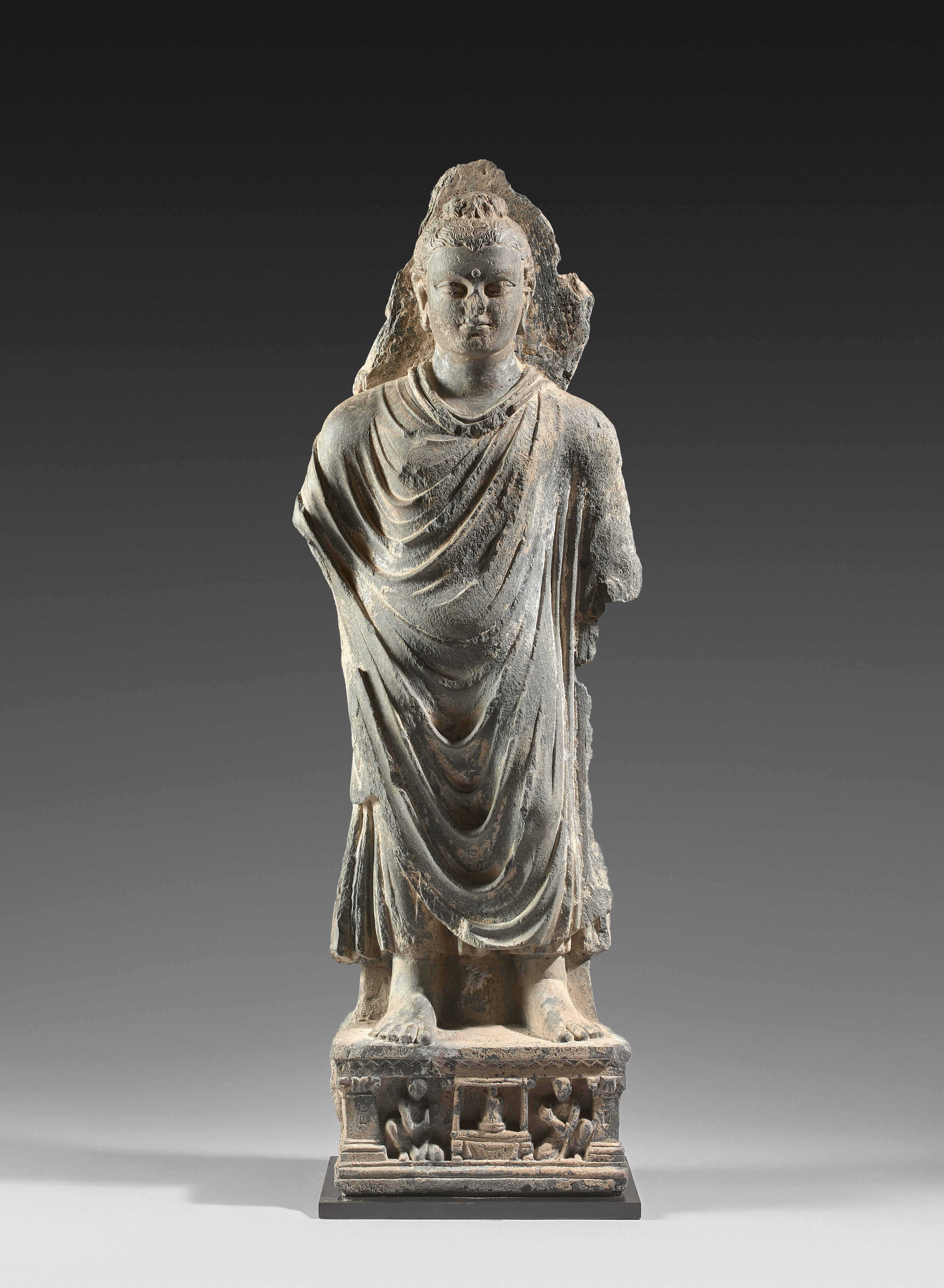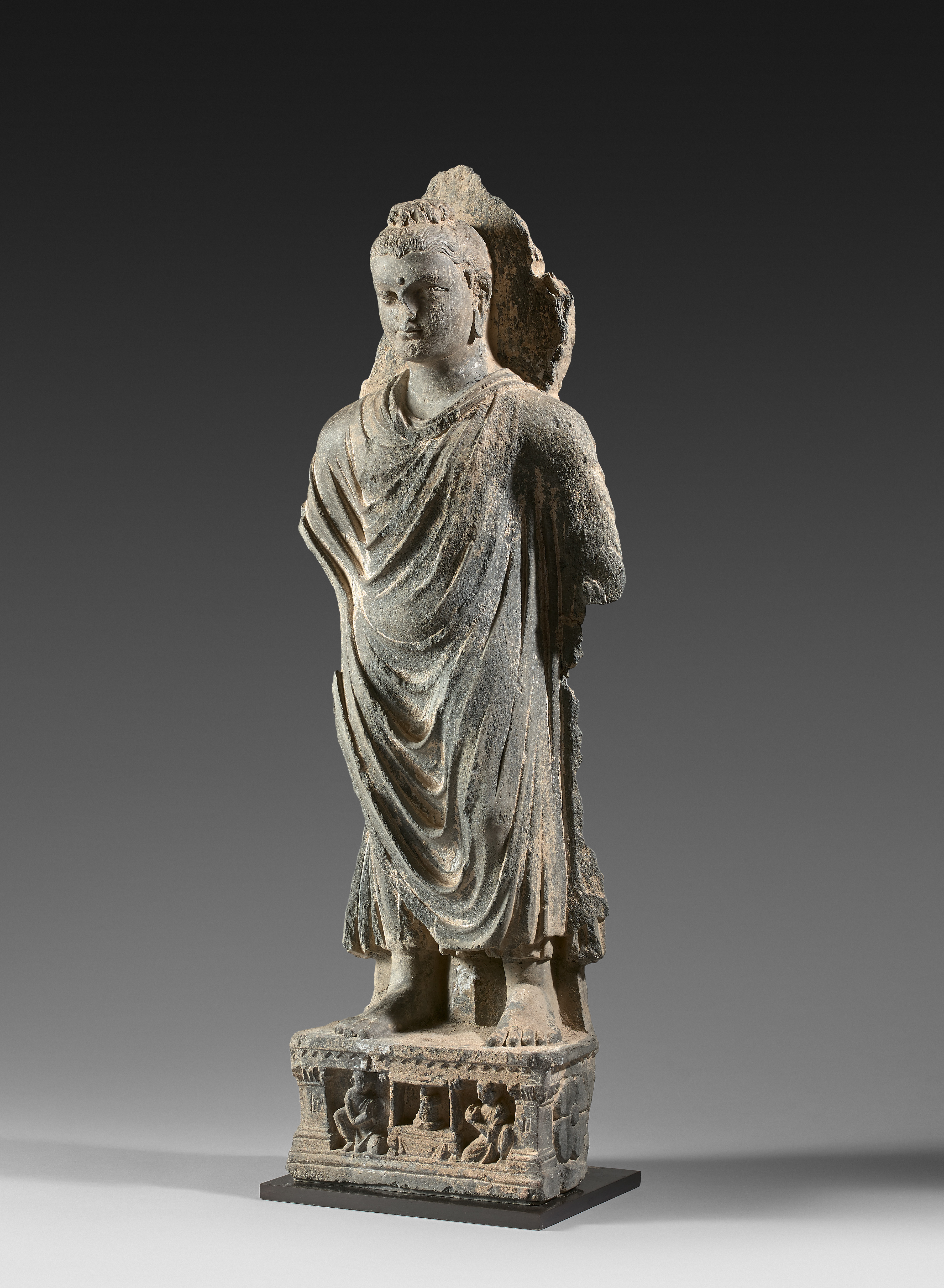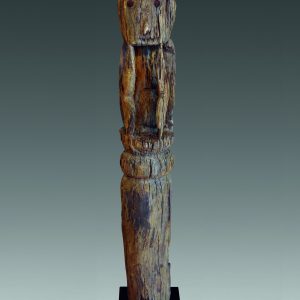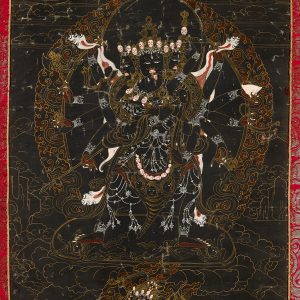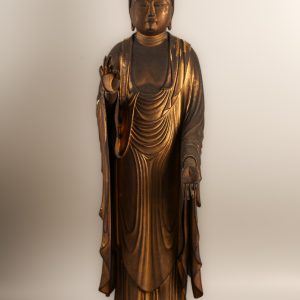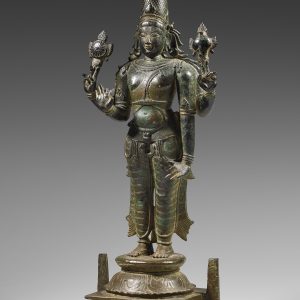Standing Buddha
Schist
Ancient region of Gandhāra
Circa 3rd century
H: 67 cm or 23 ⅝ in
Description
Beautiful standing Buddha, traditionally made of schist and measuring 61 cm high (23 ⅝ in). Its pose, its attributes, its style correspond to the apogee of this art, formerly called “Greco-Buddhist art”, an incorrect but image-evoking description, and that can be dated from the 2nd to the 4th century A.D. The caravan trade brought in Western influences and fostered the development of this original art, adapted for almost exclusively Buddhism.
Our Buddha is a perfect and beautiful example of this art style:
- His benevolent face shows two explicit signs of Buddhahood: the small whorl of hair on the lower forehead (ūrṇā) and the cranial knob (uṣṇīṣa) hidden here by curly hair pulled back loosely like a chignon.
- His pose, releasing the expected elegance of this art of Gandhāra, shows him standing, dressed in the monastic robe (saṃghāṭī) which he held a pan with his left hand.
- The treatment of the fluid drapery, with smooth, refined and harmonious pleats, emphasizes the body in the manner of the canons of ancient Helleno-Roman art.
- The base shows two orants with their hands joined on either side of an altar. The scene is framed by two pilasters with capitals of Mediterranean inspiration.
The work comes from an old French private collection. It had been acquired from the Beagle Gallery in London in 1991, a gallery specializing in Gandhāra art.

